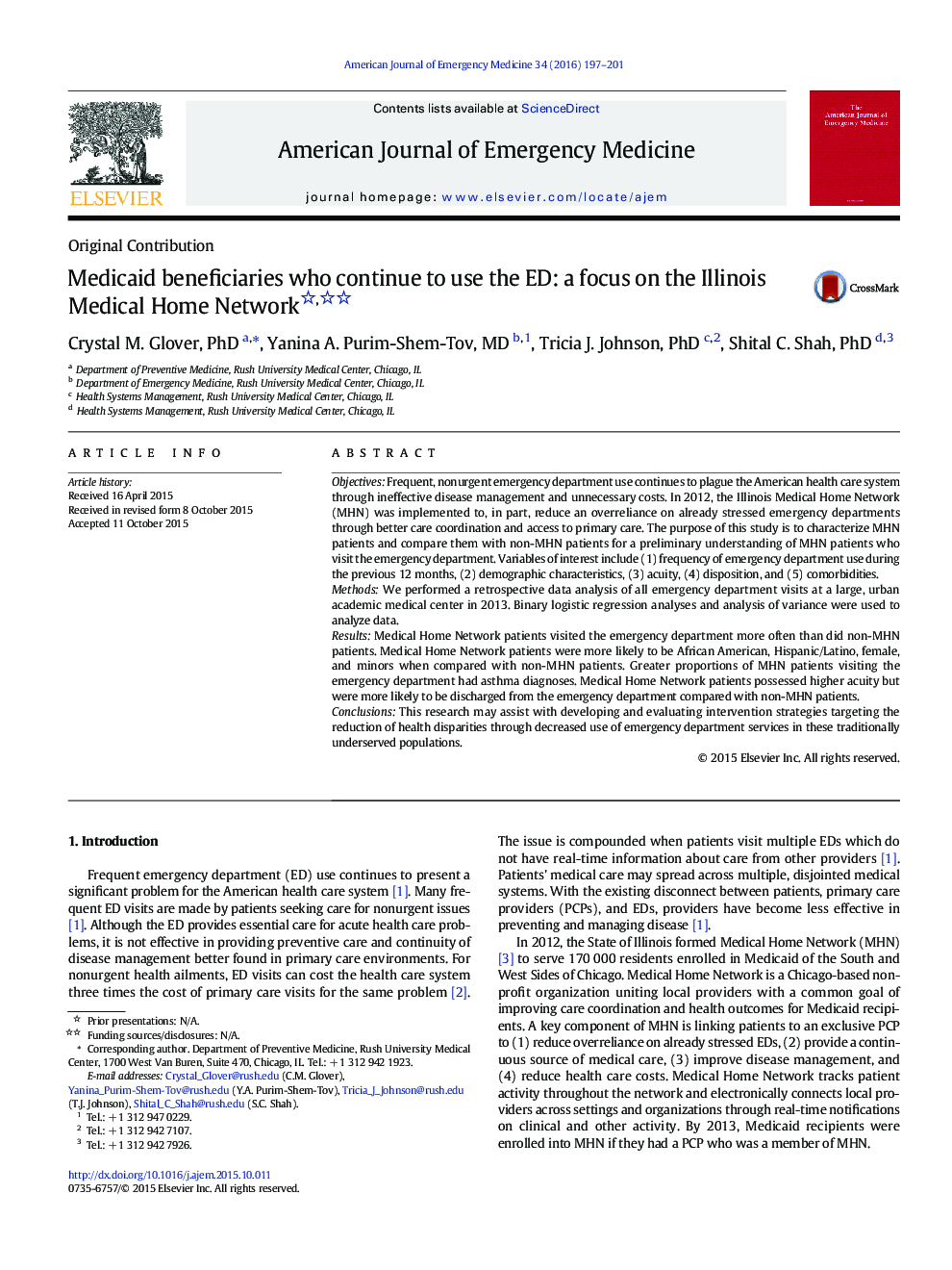| Article ID | Journal | Published Year | Pages | File Type |
|---|---|---|---|---|
| 3223208 | The American Journal of Emergency Medicine | 2016 | 5 Pages |
ObjectivesFrequent, nonurgent emergency department use continues to plague the American health care system through ineffective disease management and unnecessary costs. In 2012, the Illinois Medical Home Network (MHN) was implemented to, in part, reduce an overreliance on already stressed emergency departments through better care coordination and access to primary care. The purpose of this study is to characterize MHN patients and compare them with non-MHN patients for a preliminary understanding of MHN patients who visit the emergency department. Variables of interest include (1) frequency of emergency department use during the previous 12 months, (2) demographic characteristics, (3) acuity, (4) disposition, and (5) comorbidities.MethodsWe performed a retrospective data analysis of all emergency department visits at a large, urban academic medical center in 2013. Binary logistic regression analyses and analysis of variance were used to analyze data.ResultsMedical Home Network patients visited the emergency department more often than did non-MHN patients. Medical Home Network patients were more likely to be African American, Hispanic/Latino, female, and minors when compared with non-MHN patients. Greater proportions of MHN patients visiting the emergency department had asthma diagnoses. Medical Home Network patients possessed higher acuity but were more likely to be discharged from the emergency department compared with non-MHN patients.ConclusionsThis research may assist with developing and evaluating intervention strategies targeting the reduction of health disparities through decreased use of emergency department services in these traditionally underserved populations.
